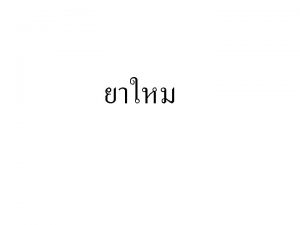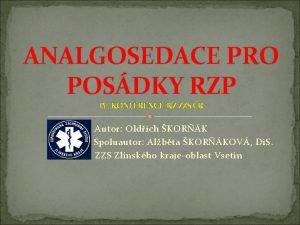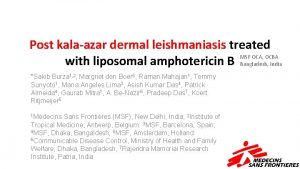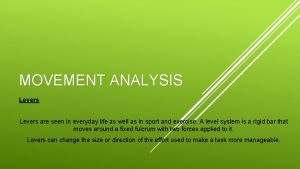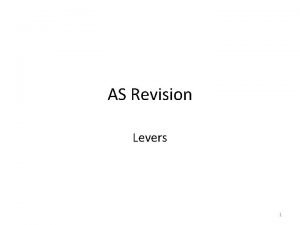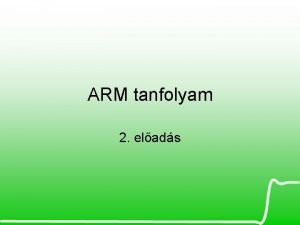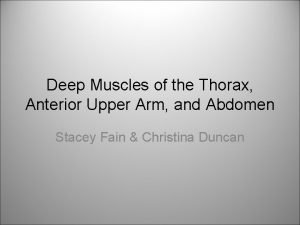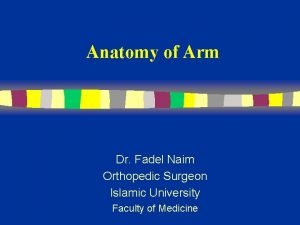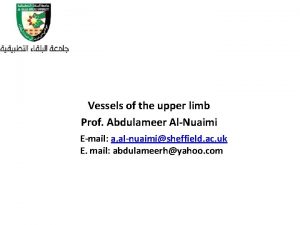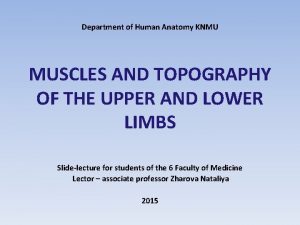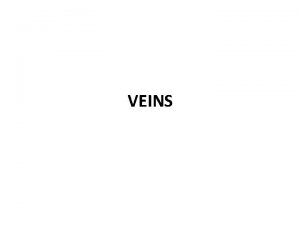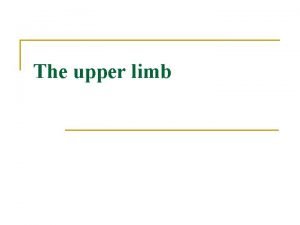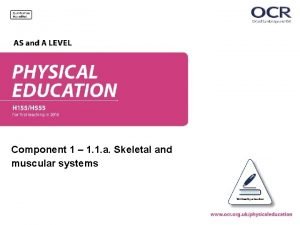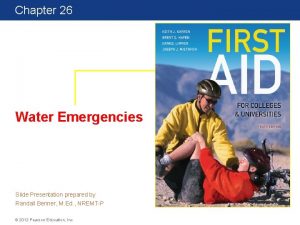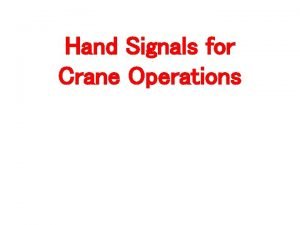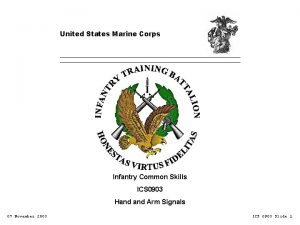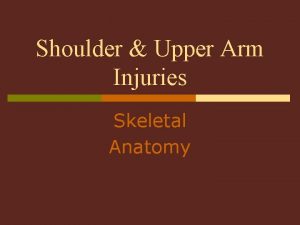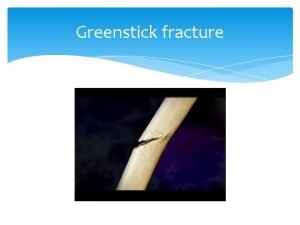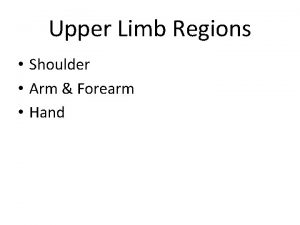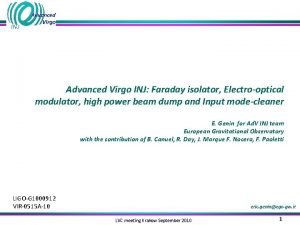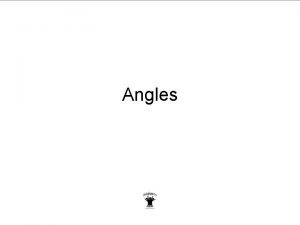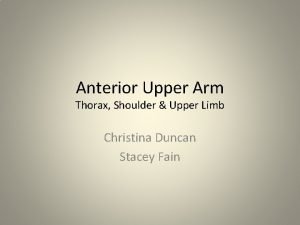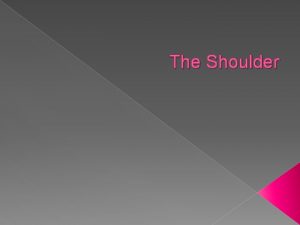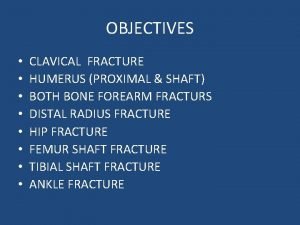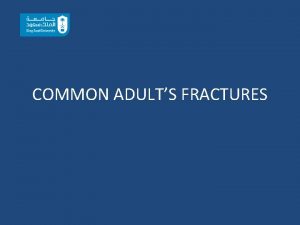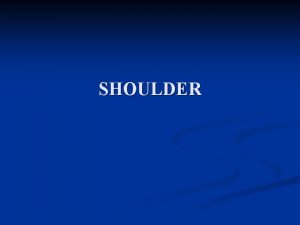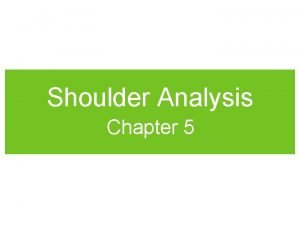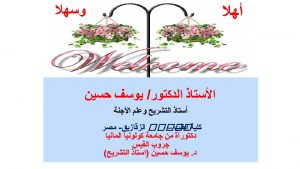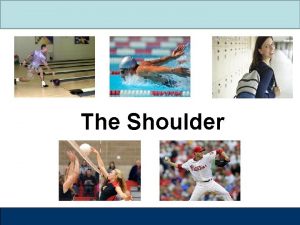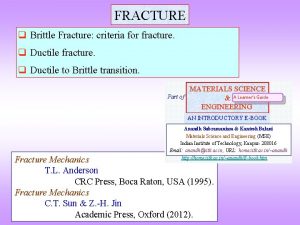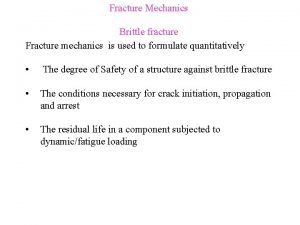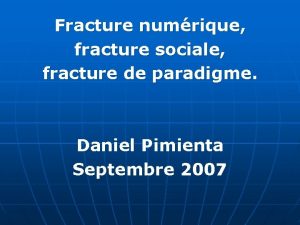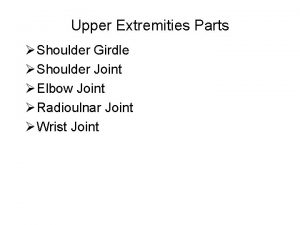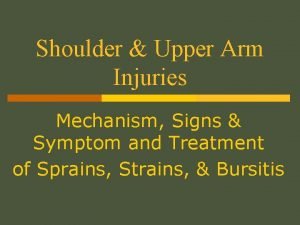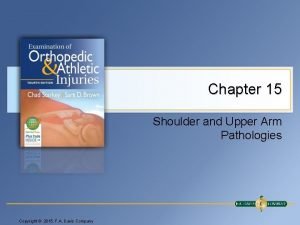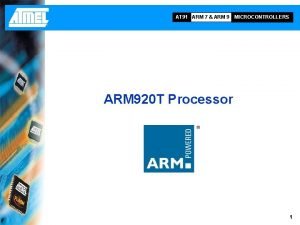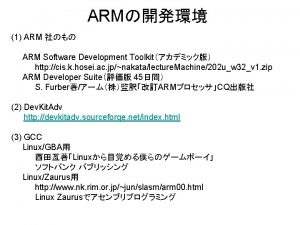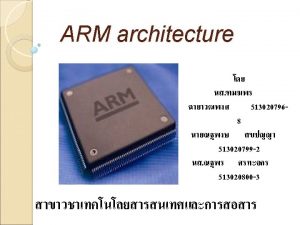Inj of shoulder and upper arm Fracture clavical
































- Slides: 32

Inj. of shoulder and upper arm Fracture clavical �In children �In adult easily united rapidly without any complication this can be much more troble some inj.

Mechanism of inj. �Fall on shoulder �Fall on out starched hand

Common site midshaft Outer segment displace downward Inner segment displace upward

C. F �The arm clasped to chest �Immoblization �Subcutanous lump �Vas. inj. rare

Dx. �X_ray AP veiw to shoulder Direction

Rx Sling Until pain subsided(2 -3)week

complication �Early • Pnemothorax • Damage subclavian vessels • Brachial plexus inj • All above rare

late Malunion Stiffness Non union

Fracture scapula Mechanism of inj. Body direct or crushed inj. � Neck blow or fall on shoulder. � Corcoid process avulsion inj � Acromian direct force. � Glenoid occur with disl. Of � shoulder.

C. f �Arm held immobile �Sever brusing overscapula and chest �Sever truma inj. tochest, spine, abd, head

X-ray Plain x-ray CT. scan

Rx Neck Glenoid usually impacted, sling(2 -3)wks. depend on glenoid surface a. less than 25% Conservative b. more than 25% Surgical Body surgery is not indicated sling and early exercise Acromian conservative and early exercise

Acromio-clavicular disl. A cute inj. Is common and usually follows direct Trauma. Chronic sprain degenerative changes seen in athletic and working with jack – hammer and Vibrating tool

Mech. Of inj. Fall on the shoulder with the arm adducted may strain or tear the AC lig and upwards subluxation of the clavicle may occur. If the force is severe the CC lig may be torn ; resulting complete disl. Of the joint

classification Type 1 Type 2 Type 3 sprain subluxation disl.

X- Ray Ap, lat. , axillary veiw. Stress veiw 5 Kg. Defrantation between sub. And dislocation.

Rx �Sprain and sublaxation by sling (2 – 3 )weeks �Displacement padding and bandaging if not control surgery

complication �Rotator cuff synd. �Unreduced dislocation. �Ossification of lig. �Secondary OA.

Sterno clavicular Dis. Un common Mech. Of inj. Lat. Compression of shoulder Ant. Dis. More common than posterior. Type of inj. Sprained , sublaxation and dis.

X- Ray �Ap. �Special oblique veiw �CT. scan

Rx �Sprian and subl. No need Rx. �Dislocation reduce

Dislocation of shoulder Occur commonly due to 1. Shollowness of glenoid socket. 2. Extraordinary range of movement.

Type of dislocation 1. Anterior dislocation 2. Postior dislocation 3. Inferior 95% most common

Ant. dislocation Common Mech. Of inj. Fall on the hand. Humers driven upward , tearing of capsule or avalsion of glenoid labrum.

C. f Sever pain Support arm with other hand Lateral boarder of shoulder Flat In thin person prominance the head under clavical

X-ray AP view 1. empty socket. 2. head medial to socket and below. 3. sss. Frature seen.

Rx 1. Stimson method 2. Hippocrate method 3. Kocher method

After reduction x-ray taken to confirm redution And exclude fracture. Neurological Ex. to exclud axillary N. inj. Sling for 3 wks under 30 years 1 wk over 30 years Elbow and Finger exersise started early.

Complication Early 1. Rotator cuff synd. 2. N. inj Axillary, ulnar median. 3. Vascular inj. Axillary artery 4. Fracture , disl.

Late 1. Stiffness of shoulder 2. Unreduce dislocation 3. Recurrent dislocation 4. instability

Posterior dislocation Rare 2% Mech. Of inj Indirect force, internal rotation and adduction occur during fit and electrical shoch

Thank You
 Nalador
Nalador Seduxen inj
Seduxen inj Inj fibrinil
Inj fibrinil Liposomal amphotericin b injection
Liposomal amphotericin b injection The night i met einstein
The night i met einstein Levers in everyday life
Levers in everyday life Suprabulge and infrabulge
Suprabulge and infrabulge How do machines make work easier
How do machines make work easier Disadvantages of second class levers
Disadvantages of second class levers Reverse circumferential clasp
Reverse circumferential clasp Toe dancers muscle a two bellied muscle of the calf
Toe dancers muscle a two bellied muscle of the calf Linker arm left arm
Linker arm left arm Susan age 5 has bruises on her upper arm
Susan age 5 has bruises on her upper arm Intravenous cannulation ppt
Intravenous cannulation ppt Muscles of the upper arm
Muscles of the upper arm Azure compliance
Azure compliance Veins of the arm
Veins of the arm Dorsal scapular artery
Dorsal scapular artery Cruropopliteal canal contents
Cruropopliteal canal contents Arm veins anatomy
Arm veins anatomy Brachialis triceps brachii
Brachialis triceps brachii Site:slidetodoc.com
Site:slidetodoc.com Prime mover of knee flexion
Prime mover of knee flexion Hip and shoulder support water rescue
Hip and shoulder support water rescue Shoulder flexion agonist and antagonist
Shoulder flexion agonist and antagonist Clove hitch restraint definition
Clove hitch restraint definition Classification of human arm and whale flipper
Classification of human arm and whale flipper Mobile crane hand signal chart
Mobile crane hand signal chart Human arm and whale flipper function
Human arm and whale flipper function Analogous structures
Analogous structures Digital design and computer architecture
Digital design and computer architecture Leaders join me hand and arm signal
Leaders join me hand and arm signal The complete sewing machine without a cabinet or stand
The complete sewing machine without a cabinet or stand
